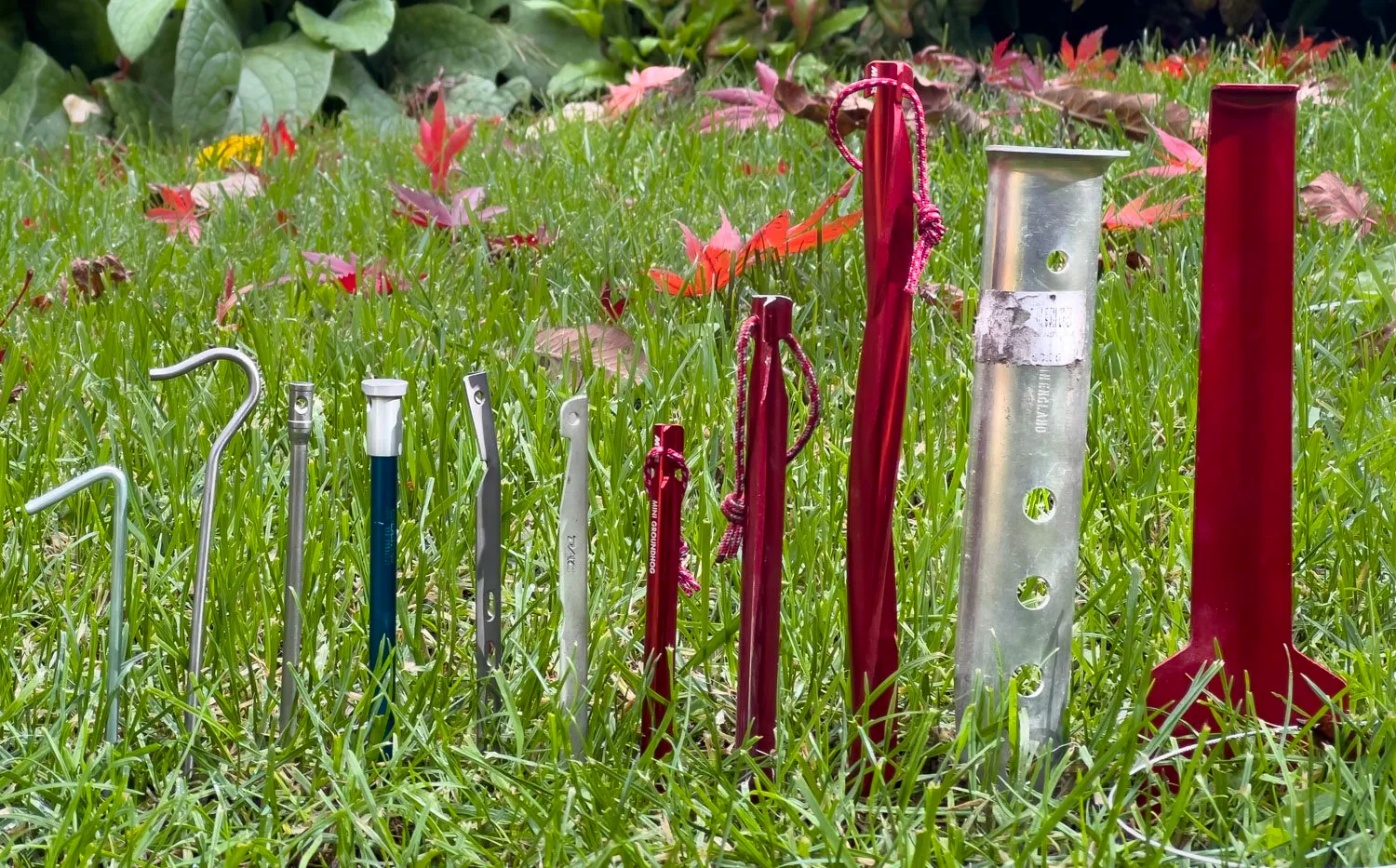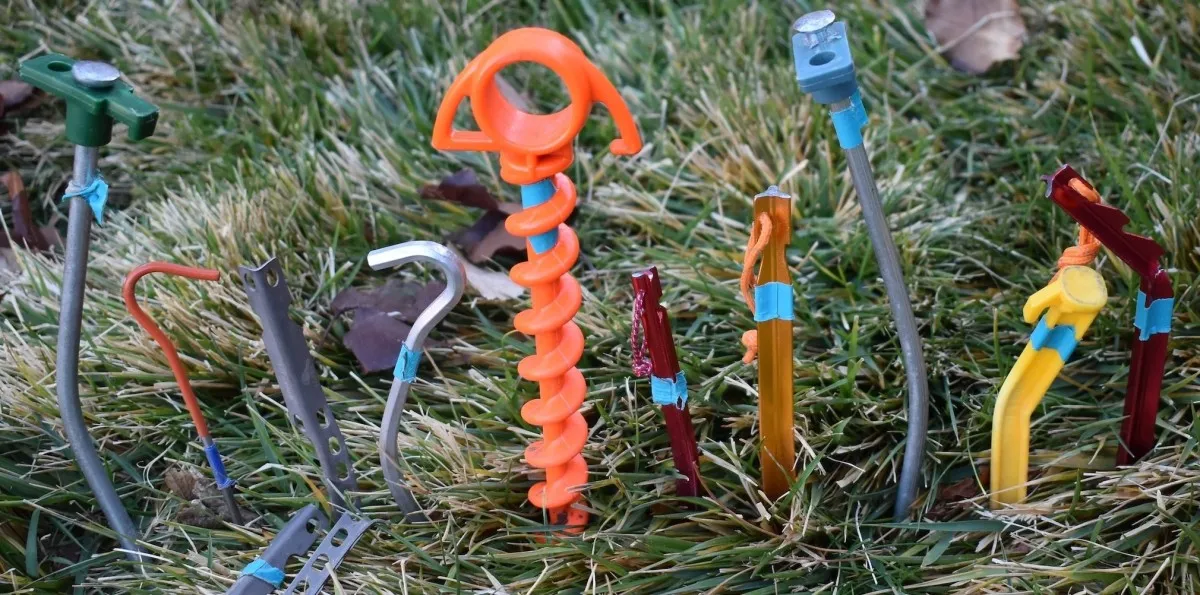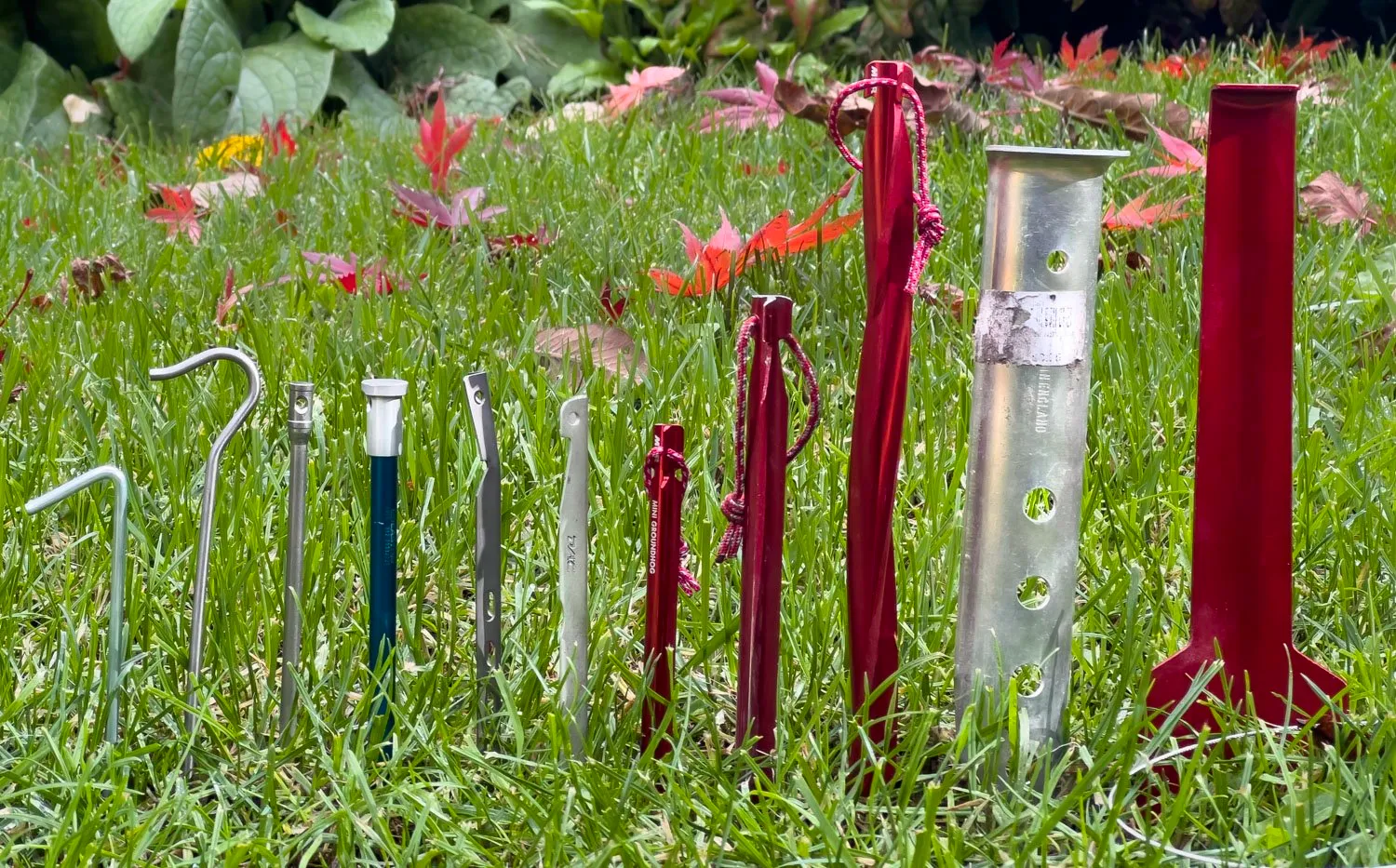When I first started camping, I wondered if tent stakes were really necessary or just another piece of gear companies wanted me to buy. After years of camping experiences—from calm lakeside nights to storm-battered mountain adventures—I've learned that understanding when and how to use tent stakes can make the difference between a peaceful night's sleep and a camping disaster. This comprehensive guide will help you understand everything about tent stakes, from when they're absolutely essential to choosing the right ones for your specific camping needs. Whether you're a beginner camper or looking to upgrade your gear, you'll discover the science behind tent anchoring and expert recommendations to keep your shelter secure in any condition. Visit Nature Guests for more camping insights.
Understanding When Tent Stakes Are Necessary
During my early camping days in the Pacific Northwest, I learned the hard way that are tent stakes necessary isn't just a theoretical question—it's a practical one that can determine whether you wake up inside your tent or searching for it in the nearby trees. The necessity of tent stakes depends on several critical factors that every camper should understand.

Freestanding vs. Non-Freestanding Tents: The first consideration is your tent type. I've used both freestanding tents like the REI Co-op Half Dome and non-freestanding ultralight shelters. Freestanding tents can technically stand without stakes, but even these benefit tremendously from proper anchoring. Non-freestanding tents absolutely require stakes to maintain their structure—I learned this lesson when my tarp tent collapsed during a moderate breeze because I'd gotten lazy about staking it out properly.
Weather Conditions: Wind is the primary enemy of unstaked tents. During a memorable camping trip in Colorado's Rocky Mountain National Park, I witnessed a neighboring camper's "freestanding" tent perform an impressive tumbling routine across the meadow during a sudden afternoon thunderstorm. The tent was undamaged but soaked from rolling through puddles. Even in seemingly calm conditions, overnight temperature changes can create unexpected wind patterns that turn your shelter into a kite.
Terrain and Ground Conditions: The question of whether are tent stakes necessary becomes more complex when considering different terrains. On established campgrounds with level ground and windbreaks, you might get away with minimal staking. However, on exposed ridges, beaches, or areas with unpredictable weather patterns, proper staking becomes essential for safety and comfort.
I've discovered that proper tent staking serves multiple purposes beyond just keeping your tent in place. Stakes help maintain proper tent geometry, ensuring optimal rainfly performance and preventing fabric stress that can lead to premature wear. They also create the tension necessary for proper ventilation, reducing condensation buildup that can make your sleeping experience miserable. For insights on what comes with your tent, check out what does a tent include.
Expert Tip: When Stakes Are Absolutely Essential
Based on my camping experience across various conditions, tent stakes are absolutely necessary when: wind speeds exceed 10 mph, you're camping in exposed areas, using non-freestanding tents, expecting rain (proper rainfly tension prevents pooling), or camping for multiple nights (prevents gradual shifting and settling).
Types and Materials of Tent Stakes
Understanding the different types and materials of tent stakes has been crucial in my camping journey. The question are tent stakes necessary often depends on using the right type for your specific conditions. Through years of trial and error, I've learned that the wrong stakes can be worse than no stakes at all.
Aluminum Stakes: These are the workhorses of the camping world. During my backpacking trips along the Appalachian Trail, I relied heavily on lightweight aluminum stakes. They offer an excellent balance of weight, strength, and cost-effectiveness. Quality aluminum stakes like the MSR Groundhog series can handle most soil conditions and moderate winds. However, I've bent my share of cheap aluminum stakes trying to hammer them into rocky soil—investing in quality makes a significant difference.
Titanium Stakes: For ultralight enthusiasts, titanium stakes represent the pinnacle of weight savings without sacrificing strength. I use Vargo titanium stakes for my solo backpacking adventures where every ounce matters. These premium stakes cost more but deliver exceptional performance in a variety of conditions. They're particularly excellent for snow camping and soft soils where their strength-to-weight ratio shines.
Steel Stakes: When camping in extremely hard or rocky terrain, steel stakes become invaluable. I keep a few heavy-duty steel stakes in my car camping kit for those challenging sites where standard stakes fail. They're heavier than aluminum or titanium but virtually indestructible. For techniques on using heavy-duty stakes, visit heavy duty tent stakes and heavy duty metal tent stakes.
Stake Shape Considerations
Shepherd's Hook: Traditional and reliable for most conditions, easy to extract.
V-Shaped: Excellent holding power in soft ground, nest together for compact storage.
Nail Stakes: Perfect for extremely hard ground, require more careful handling.
Sand Stakes: Wide surface area for loose sand and snow conditions.
The shape of your stakes matters as much as the material. I've learned that Y-shaped stakes like the MSR Groundhog provide excellent holding power in most soil types, while needle-style stakes excel in hard-packed earth. For snow camping, I use specialized snow stakes or even improvised deadman anchors using gear bags filled with snow.
Choosing the Right Stakes for Your Needs
Selecting the appropriate tent stakes requires understanding your camping style, typical conditions, and specific needs. The question are tent stakes necessary becomes easier to answer when you know which stakes work best for your situations. Through extensive field testing, I've developed a systematic approach to stake selection.

Backpacking Stakes: For backpacking, weight is paramount. I typically carry 6-8 ultralight stakes weighing no more than 10 grams each. My go-to setup includes MSR Mini Groundhog stakes for their excellent holding power and reasonable weight. The key is carrying just enough stakes for essential anchor points—tent corners, guylines, and vestibule corners.
Car Camping Stakes: When weight isn't a concern, I opt for longer, more robust stakes. Heavy-duty steel stakes or thick aluminum stakes provide superior holding power and durability. I learned this lesson during a family camping trip in Wyoming when sudden winds turned our campsite into chaos—longer stakes buried deeper provided the stability we needed.
Terrain-Specific Selection: Different terrains demand different approaches. For rocky terrain, I pack steel nail stakes and a small hammer. Sandy conditions require stakes with larger surface areas or the ability to bury gear as deadman anchors. Snow camping involves specialized snow stakes or improvised anchors. The key is researching your destination's typical ground conditions before departure.
Length matters significantly in stake selection. I've found that 6-7 inch stakes work well for most conditions, but challenging terrain benefits from 8-10 inch stakes. The extra length provides more holding power and better resistance to pulling out under stress. For specific guidance on using specialized stakes, check out Big Agnes tent stakes how to use.
My Stake Selection Strategy
Standard Conditions: Aluminum Y-stakes, 6-7 inches, 8-10 stakes total
Rocky Terrain: Steel nail stakes, 6 inches, with small hammer
Sand/Snow: Wide stakes or deadman anchor materials
Ultralight: Titanium or carbon fiber stakes, minimal quantity
Proper Installation Techniques
Knowing how to properly install tent stakes is crucial for maximizing their effectiveness. The question are tent stakes necessary becomes moot if they're installed incorrectly. Through years of camping experience, including some memorable failures, I've learned the techniques that ensure reliable tent anchoring.

Angle and Depth: The most critical aspect of stake installation is the angle. I've learned through trial and error that stakes should be driven at approximately 45-60 degrees away from the tent, not straight down. This angle maximizes holding power by creating resistance against the pulling force. The stake should be driven until only the top loop or hook remains above ground level.
Guyline Tension: Proper guyline tension is essential for stake effectiveness. I've developed a systematic approach: first, stake out the tent corners with moderate tension, then adjust guylines to create a taut but not overstressed setup. Over-tensioning can cause stakes to pull out or fabric to tear, while under-tensioning allows the tent to flap and create stress points.
Soil Preparation: When possible, I clear rocks and debris from stake locations and slightly loosen hard soil. In rocky terrain, I look for soil pockets or use the "rock pinch" technique—placing the stake between rocks that hold it in place. In soft sand, I create a small depression and drive the stake deeper than usual, sometimes burying part of the guyline for additional holding power.
Testing and Adjustment: After initial setup, I test each stake by applying gentle pressure in the direction of anticipated wind. Loose stakes get repositioned or replaced with longer ones. I also check stake security after the first night, as soil settling can reduce holding power. This practice has saved me from several potential tent disasters.
Advanced Techniques for Challenging Conditions
Deadman Anchors: Bury gear bags or rocks tied to guylines in soft conditions
Rock Pinning: Use natural rock formations to secure stakes
Snow Anchoring: Pack snow around buried stakes for extra holding power
Multi-Point Anchoring: Use multiple stakes per anchor point in extreme conditions
Top Tent Stake Recommendations
After extensive testing in various conditions, I've identified the best tent stakes for different camping scenarios. Understanding whether are tent stakes necessary for your specific needs helps guide these equipment choices. These recommendations are based on real-world performance, durability, and value.
🏆 Best Overall: MSR Groundhog Stakes
The MSR Groundhog stakes have been my go-to choice for over five years. Their Y-beam design provides excellent holding power in most soil conditions, while the bright red color makes them easy to spot during pack-up. At 0.46 oz each, they balance weight and performance perfectly.
⚡ Best for Ultralight: Vargo Titanium Stakes
For weight-conscious backpackers, Vargo titanium stakes are unbeatable. At just 0.3 oz each, they're incredibly light yet strong enough for most conditions. I've used these extensively on solo backpacking trips where every ounce matters.
💪 Best for Heavy Duty: Steel Tent Stakes
When facing challenging terrain or extreme weather, heavy-duty steel stakes provide unmatched holding power. I keep these in my car camping kit for situations where standard stakes fail. They're heavier but virtually indestructible.
🏔️ Best for Snow/Sand: Wide Profile Stakes
For snow camping or beach camping, wide-profile stakes provide the surface area needed for reliable anchoring in soft conditions. These specialized stakes have saved my setup in challenging environments where standard stakes would fail.
For budget-conscious campers, I recommend starting with a basic set of aluminum Y-stakes and upgrading based on experience. The key is having enough stakes for your tent's anchor points plus 2-3 extras for replacements or challenging conditions. Quality stakes are an investment that pays dividends in reliability and peace of mind.
Essential Stake Kit Recommendations
Beginner Kit: 8-10 aluminum Y-stakes, stake puller, storage bag
Intermediate Kit: Mix of aluminum and titanium stakes, backup steel stakes
Advanced Kit: Terrain-specific stakes, deadman anchor materials, repair kit
Ultralight Kit: Minimum titanium stakes, multi-use items as anchors
Remember that the best tent stakes are the ones that work reliably in your specific camping conditions. I maintain different stake kits for different types of trips—ultralight stakes for backpacking, heavy-duty stakes for car camping, and specialized stakes for challenging conditions. This approach ensures I'm always prepared regardless of where my adventures take me. For more information about this topic, visit are tent stakes necessary.
🎯 Ready to Secure Your Next Adventure?
Don't let inadequate tent stakes ruin your camping experience. Invest in quality stakes that match your camping style and conditions.
🛒 Shop Premium Tent Stakes NowConclusion
After years of camping experience and countless nights under various conditions, I can definitively answer the question are tent stakes necessary: Yes, they are essential for safe and comfortable camping. While freestanding tents can technically stand without stakes, proper anchoring transforms a potentially disastrous night into a peaceful sleep experience.
The key insights from my camping journey are clear: invest in quality stakes appropriate for your camping style, learn proper installation techniques, and always carry extras. Whether you're backpacking through the wilderness or car camping with family, the right tent stakes provide the foundation for a successful outdoor adventure.
Remember that tent stakes are more than just accessories—they're safety equipment that protects your shelter investment and ensures your well-being in challenging conditions. The small weight penalty and minimal cost of quality stakes pale in comparison to the security and peace of mind they provide.
Start with a basic kit of reliable aluminum stakes and expand your collection based on your camping experiences. Pay attention to the terrain and weather conditions you typically encounter, and choose stakes accordingly. With proper selection and installation, tent stakes will become an indispensable part of your camping gear that you'll rely on for years to come.
So next time someone asks whether are tent stakes necessary, you can confidently share the knowledge that they're not just necessary—they're essential for turning any camping trip from a survival experience into an enjoyable outdoor adventure. Happy camping, and may your tent always stay exactly where you put it!
Continue Your Camping Journey
Explore more expert camping guides and gear reviews to enhance your outdoor adventures.
🏕️ Visit Nature Guests 🛒 Shop Camping Gear

